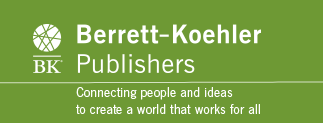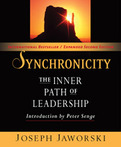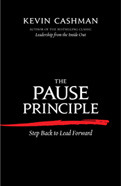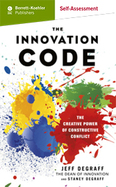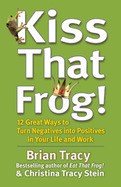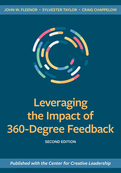2011
2012
- By the author of the bestselling Leadership from the Inside Out
- Presents a paradoxical and transformative principle: in today's world, leaders must step back in order to move forward with more purposeful, value-generating impact
- Filled with insights, research, stories, and pragmatic exercises to help leaders pause to grow themselves, grow others, and grow cultures of innovation
- Click here for the press release
Accustomed to doing, striving, and achieving, leaders are too often addicted to speed and action. But we live and lead in an increasingly volatile, uncertain, complex, and ambiguous world. Change is constant and we are on information overload. The way forward is often unclear.
How can leaders deal with critical decisions, develop creative solutions, and thrive in the relentless pace of their 24/7 reality?
Paradoxically, Kevin Cashman contends that the answer is not to act more quickly but to pause more deeplyto slow down to go fast, to stop and prioritize, to make time to discern and think clearly. Rather than doing more, we need to learn to do differently. The Pause Principle offers a catalytic process to move from mere management efficiency and transaction to leadership innovation and transformation.
Pausing is a poweful methodology to imbue continuous growth in three critical domains: personal leadership, development of others, and fostering of innovation cultures. Drawing on decades of experience working with senior leaders, personal stories, and research in psychology, neuroscience, and leadership development, Cashman focuses our attention on our inherent power to ground our leadership and our organizations in authenticity, generativity, and purposeful transformation.
The demands on global leaders have never been more challenging. With so much coming at them, leaders must pause to make sense of it all. The Pause Principle offers breakthrough practices for leading as a whole person, harnessing one's drive to create more compelling, creative, and sustainable futures.
Innovation comes from creative tension, not harmonious interaction, says Dean of Innovation Jeff DeGraff. He identifies four basic approaches to innovation and shows how leaders can manage the inevitable conflicts between them to create brilliant, unexpected hybrid solutions. The four dominant world views are Artist, Athlete, Engineer, and Sage. They will also show four leadership dimensions of Orientation, Flexibility, Momentum, and Magnitude within the four dominant world views. The graphic results will show the the four approaches at the individual and the organizational levels.

PRODUCT INFORMATION
Format: Online Subscription
Price: $9.95 for one-year subscription, or five tests, whichever comes first
Description: This instrument consists of 24 question, 12 pertaining to the individual and 12 pertaining to the organization. For each section, consider the answer choices for each question and rank them in order of their relevancy. The assessment will produce a graphic of your results and interpretation from the coauthors. You can take the test up to five times within a 12-month period and compare your results.
Coauthors' Welcome
Harmony is sublime in music, but it’s deadly to innovation. The only way to create new hybrid solutions is to clash. Innovation occurs when people with contrasting perspectives and complementary areas of expertise are in one room. We innovate best with people who challenge us, not people who agree.
The best innovation teams are like bands of superheroes: members recognize their individual gifts and talents, but they don’t let those superpowers limit them. They know when to rely on their own skills and when their partners should take over.
Before you can create your own team of superheroes, you need to understand your strengths and weaknesses.
Have your colleagues or friends take this assessment too. Then create space and time to discuss each other’s results openly and honestly. The trick is not to hide your weaknesses, but to surround yourself with people who are strong where you are weak.
2012
This hands-on guide from the Center for Creative Leadership (CCL) shows how to implement effective 360-degree feedback systems as part of leadership development initiatives in organizations. Written for professionals who work inside organizations and external consultants working with clients, the book draws on over twenty years of research and practice in organizations both large and small. Expert authors from CCL provide step-by-step guidelines for successful 360-degree feedback as well as best practices observed and tested with CCL's broad base of clients.
The second edition is updated with advances in the field over the past ten years and features new chapters on what affects validity, why the process can fail, and the future of leadership. The book includes worksheets, checklists, and other tools to use or adapt with a 360-degree feedback process in any organization.
We may be living longer, but people are more socially isolated than ever before. As a result, we are hindered both mentally and physically, and many of us are looking for something concrete we can do to address problems like poverty, racism, and climate change. What if solutions could be found on your very doorstep or just two door knocks away?
Cormac Russell is a veteran practitioner of asset-based community development (ABCD), which focuses on uncovering and leveraging the hidden resources, skills, and experience in our neighborhoods. He and John McKnight, the cooriginator of ABCD, show how anyone can discover this untapped potential and connect with his or her neighbors to create healthier, safer, greener, more prosperous, and welcoming communities. They offer a wealth of illustrative examples from around the world that will inspire you to explore your own community and discover its hidden treasures.
You will learn to take action on what you already deeply know-that neighborliness is not just a nice-to-have personal characteristic but essential to living a fruitful life and a powerful amplifier of community change and renewal.
